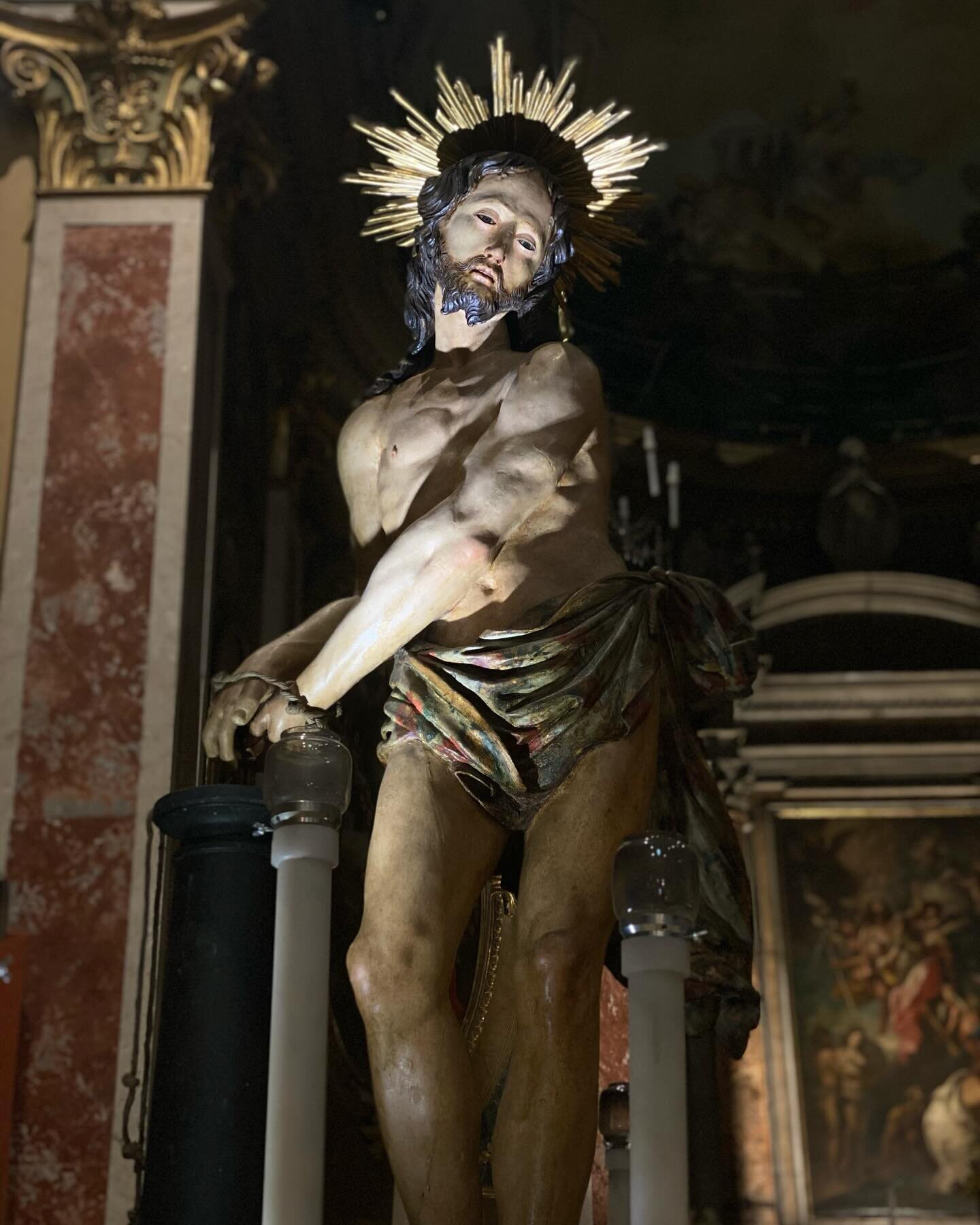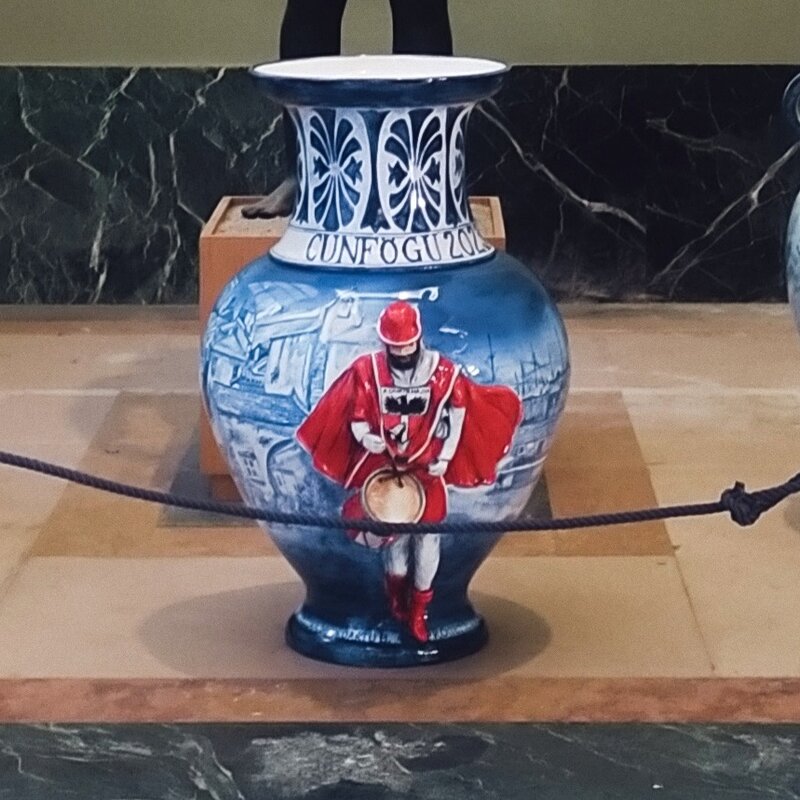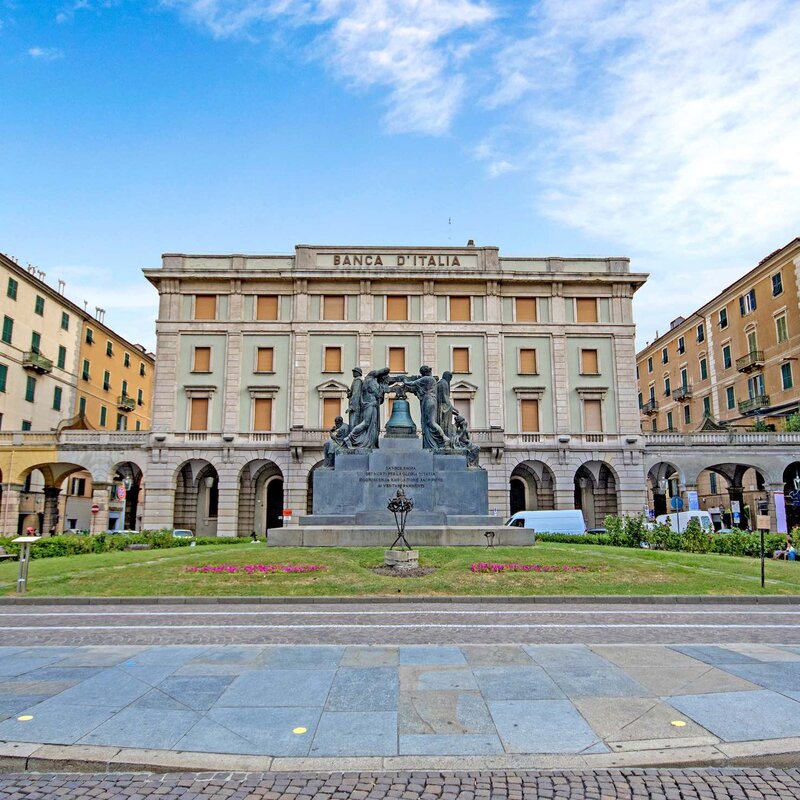Good Friday Procession

Its historical and artistic importance is primarily due to valuable wooden pedestals (called casse) that depict the ‘Mysteries’, i.e. the stations in the Passion of Christ. This religious event dates back to 13th century penitential rites, which were performed by the Disciplinati (flagellants), more commonly known as Brotherhoods.
Originally, the episodes and mystery plays of Christ’s Passion were staged by the brethren themselves. Today, the brethren still wear hoods with the (white, red and blue) colours of the Brotherhoods, taking shifts to carry the heavy wooden pedestals mounted on long, hoisting poles. In the late 16th century and in the centuries that followed, the Brotherhoods commissioned celebrated artists to create polychromatic, wooden pedestals. The finest pedestals were made by the Ligurian sculptors Anton Maria Maragliano (1664-1739), Filippo Martinengo (1750-1800), Stefano Murialdo (1776-1838), and Antonio Brilla (1813-1891).
Musical ensembles and choirs performing sacred music pieces confer even greater solemnity to the procession. Some of these pieces, including the ‘motets’, are composed specifically for this event.
The procession is not only a religious event and a display of faith, but it is also a celebration of art, history, tradition, and folk culture. Before leaving the oratories and the churches where they are kept, the pedestals are arranged by florists and floral designers.
The pedestals being ‘dressed up’ and decorated with foliage and flower arrangements look like a busy and fragrant backstage.

